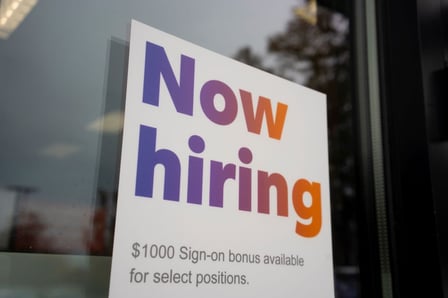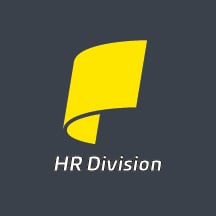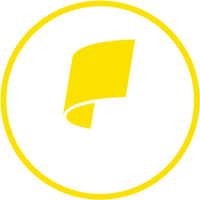This blog is part of an ongoing series addressing the current labor shortage. Topics include: Employee Engagement Strategies to Keep Top Talent, Attract Great Employees When No One Wants to Work, Causes Driving the Current Labor Shortage, Creating Better Workplaces: Rethinking the Relationship Employees Have with Work and The Costs of Unfilled Vacancies.
Experts say the labor shortage is here to stay, at least for now. What can employers do to overcome staffing challenges? How can employers keep up with growing demands and avoid business disruption? Here are a few solutions that may help. Make Workers a Better Offer. Employees are leaving their current jobs for better working conditions, benefits, flexibility, and work-life balance. In a tight labor market, you don’t want to lose your employees over areas that can be improved.
Make Workers a Better Offer. Employees are leaving their current jobs for better working conditions, benefits, flexibility, and work-life balance. In a tight labor market, you don’t want to lose your employees over areas that can be improved. 
Determine what you need to do to make adjustments in order to create more attractive job opportunities. This may mean more competitive pay, enhanced benefits, more training or reskilling opportunities, and better overall working conditions. According to a recent study, 94% of employees surveyed say they would remain at their job if their employer would invest in their development and provide training opportunities. Therefore, look for ways to ensure employees are provided with the necessary training, resources, tools, and support to perform their jobs successfully.
Creating a more attractive job offer not only benefits workers but also benefits employers as well. Results can include better employee engagement rates, lower turnover, and increased productivity. In addition, keeping workers leads to lower expenses associated with less time and money spent on recruitment, onboarding, and training.
Look for Ways to Enhance Your Employee Benefits Package. According to the 2022 Global Benefits Attitudes Survey, more than half (53 percent) of employees in the U.S. are open to leaving their current employers. Workers are reevaluating what they want in a job and are taking a hard look at work opportunities based not only on wages but also on benefits that are important to them. This may include higher quality health insurance plans, expanded benefit options, paid family and medical leave, employee assistance programs, flexible work options, and opportunities for advancement and growth.
Outsource Where You Can. Determine how to do more with less. Cut out time-consuming tasks and focus on productivity and efficiency. Before the pandemic, many businesses were taking advantage of the benefits of outsourcing to save money and time.
 The first step is to identify the processes, functions, and areas of your business where you need the most support. Some of the most common areas include human resources, customer service, payroll, risk management, and customer service. Many small businesses have found outsourcing to a Professional Employer Organization (PEO) not only as a remedy for navigating the labor crisis but also as a long-term strategy to lower costs, gain access to better benefits and add expertise. A PEO can help with:
The first step is to identify the processes, functions, and areas of your business where you need the most support. Some of the most common areas include human resources, customer service, payroll, risk management, and customer service. Many small businesses have found outsourcing to a Professional Employer Organization (PEO) not only as a remedy for navigating the labor crisis but also as a long-term strategy to lower costs, gain access to better benefits and add expertise. A PEO can help with:
✔️Lower HR-related Expenses. Working with a PEO lowers HR-related expenses and saves your business money in many ways. According to a study, 70 percent of companies that partner with a PEO report revenue growth twice that of comparable non-PEO firms. Based on cost savings alone, the ROI of partnering with a PEO is 27.2 percent per year.
According to a report conducted by the National Association of Professional Employer Organizations (NAPEO), PEOs provide access to more HR services at a cost close to $450 lower per employee compared to businesses that manage their HR services in-house. In addition, studies show that companies that partner with a PEO see a 21% savings in HR administration.
✔️Access to Better Health Plans and Employee Benefits. In addition, a PEO can help employers lower health plan costs and provide better benefits, such as top-rated health insurance plans and enterprise-level benefit packages similar to those offered at large corporations.
✔️Added Expertise. One of the most valuable benefits of outsourcing to a PEO is that it's flexible and can evolve as your business grows and needs change. Services that can be customized to meet the needs that are specific to your business. Employers can access new tools, implement more innovative strategies, and gain valuable industry expertise to impact company performance.
Get Creative with Recruitment. Find more creative ways to attract workers, such as
 offering sign-on bonus and incentives, developing more competitive referral programs, and creating an easier and more efficient hiring process.
offering sign-on bonus and incentives, developing more competitive referral programs, and creating an easier and more efficient hiring process.
Provide Flexible Work Options. Without enough workers, employers need to find new ways to streamline services and modify processes to get more work done. For example, this may require investing in technology in order to automate certain functions or provide more workplace flexibility. Studies shows that a majority of job seekers are more likely to work for a company that allows the flexibility to work from home. Workplace flexibility is not limited to remote work but may also include the option to choose a schedule that best suits an employee’s needs.
Workforce Solutions are in the Hands of Employers
As demand continues to increase, the labor pool is decreasing. Waiting for the labor shortage to end and hoping more workers appear is not an answer. Taking action is, especially if you want your business to grow.
 About Propel HR. Propel HR is an IRS-certified PEO that has been a leading provider of human resources and payroll solutions for more than 25 years. Propel partners with small to midsized businesses to manage payroll, employee benefits, compliance and risks, and other HR functions in a way that maximizes efficiency and reduces costs. Visit our new website at www.propelhr.com.
About Propel HR. Propel HR is an IRS-certified PEO that has been a leading provider of human resources and payroll solutions for more than 25 years. Propel partners with small to midsized businesses to manage payroll, employee benefits, compliance and risks, and other HR functions in a way that maximizes efficiency and reduces costs. Visit our new website at www.propelhr.com.









